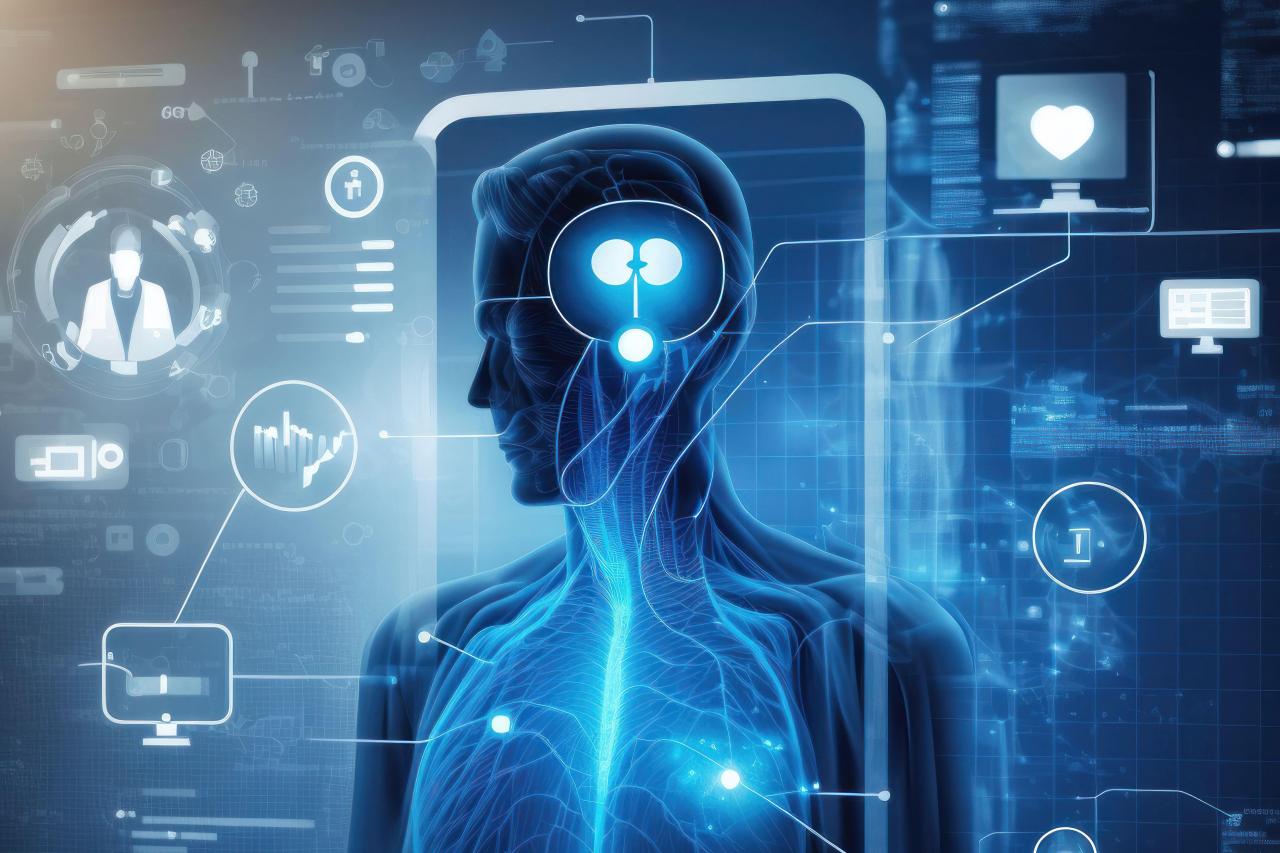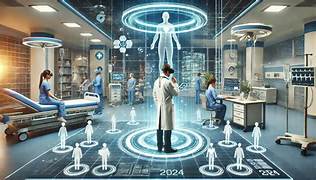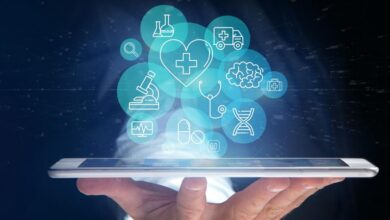Medical Misinformation In The Age Of Ai Who’S Accountable?

Medical Misinformation in the Age of AI: Who’s Accountable? sets the stage for a critical examination of the challenges we face in the healthcare landscape today. With technology and artificial intelligence increasingly shaping the way we consume medical information, the line between fact and fiction has never been more blurred. This narrative delves into the evolution of misinformation in healthcare, exploring how AI contributes to both the spread and the potential resolution of these issues, and emphasizes the importance of accountability among various stakeholders.
As we navigate this complex terrain, it becomes essential to understand the historical context of misinformation, the role of AI, and the responsibilities of tech companies and healthcare professionals in ensuring that the public receives accurate health information. The intersection of technology and medicine requires a collaborative approach to tackle misinformation effectively.
Introduction to Medical Misinformation

Medical misinformation refers to the spread of false or misleading health information that can have serious consequences for individuals and communities. In today’s digital age, the relevance of this issue has surged as the public increasingly relies on online platforms for healthcare guidance, sometimes leading to harmful decisions based on inaccurate information. The accessibility of medical information has never been greater, but this influx of content comes with the risk of encountering misinformation.
Technology and artificial intelligence play a dual role in the dissemination of medical information. On one hand, AI systems can assist in filtering and verifying credible sources; on the other hand, they can inadvertently contribute to the spread of misinformation by amplifying popular but incorrect narratives. Social media platforms, search engines, and content-driven websites often prioritize engagement over accuracy, resulting in the rapid sharing of misleading health claims. The challenge is to develop technological solutions that can distinguish between reliable health information and harmful misinformation.
Historical Context of Misinformation in Healthcare
Misinformation in healthcare is not a new phenomenon; it has existed for centuries, often fueled by a lack of scientific understanding and the spread of anecdotal evidence. Historically, people relied on word of mouth and limited print resources, making it difficult to access reliable health information. The invention of the printing press allowed for greater distribution of medical texts, but this also meant that misinformation could spread more widely. For example, in the 17th century, the concept of ‘humors’ dominated medical thinking, leading to widespread yet incorrect treatments based on these unfounded beliefs.
Over the years, various health panics have illustrated the impact of misinformation. The anti-vaccine movement, which gained traction in the late 1990s through a now-debunked study, serves as a significant contemporary example of how a single piece of misinformation can lead to public health crises. As the internet has evolved, the rapid proliferation of information has created an environment where false claims can easily circulate, sometimes causing substantial harm before they are corrected. In this context, understanding the historical patterns of misinformation is crucial for addressing the challenges posed by today’s digital landscape.
The Role of Artificial Intelligence
Artificial Intelligence (AI) has emerged as a powerful tool in various sectors, including healthcare. However, its contribution to the dissemination of medical information is a double-edged sword. While AI can enhance communication and access to medical knowledge, it also poses risks by proliferating misinformation. Understanding the mechanisms through which AI generates misleading health content is essential for evaluating its impact on public health.
The integration of AI technologies into medical content creation and distribution can lead to significant challenges. AI algorithms, particularly those involved in natural language processing and machine learning, often analyze vast amounts of data to generate content. However, this process can inadvertently lead to the replication and amplification of existing inaccuracies found in online health information. Additionally, the lack of rigorous oversight in AI systems can result in the prioritization of engagement metrics over factual accuracy.
Mechanisms of Misinformation Generation
AI-driven platforms utilize various mechanisms that can lead to the spread of misleading health content. These mechanisms include:
- Data Misinterpretation: AI can misinterpret health data from unreliable sources, leading to false conclusions. For example, if an AI system is trained on biased datasets, it may produce inaccurate health recommendations.
- Content Generation Algorithms: AI algorithms that generate text or responses may produce misleading information if they rely on flawed training data. The algorithm might generate plausible-sounding but incorrect medical advice.
- Amplification of Popular Misinformation: AI systems prioritize content that garners attention. This means sensational or misleading health claims can spread rapidly, overshadowing accurate information.
- Social Media Dynamics: AI algorithms on platforms like Twitter or Facebook can create echo chambers where health misinformation is circulated and reinforced, leading to widespread belief in false claims.
Examples of AI-driven platforms implicated in spreading misinformation include chatbots providing health advice that may not be based on evidence, and automated content generators that mimic credible sources without proper verification. These platforms illustrate the need for vigilance and accountability in the application of AI in healthcare communication.
“AI has the potential to either bridge the information gap in healthcare or widen it significantly, depending on how it’s utilized.”
Accountability in the Digital Age
As we navigate the complexities of medical misinformation in an era dominated by digital communication and artificial intelligence, the question of accountability becomes increasingly pertinent. Various stakeholders, including tech companies, healthcare professionals, and patients, play critical roles in the dissemination and management of information. Understanding their responsibilities is essential in combating the spread of false or misleading medical content.
Tech companies have a significant responsibility in managing misinformation, especially as platforms host vast amounts of health-related content. These companies are tasked with implementing effective algorithms and content moderation practices to identify and curtail the spread of inaccurate information. The rise of AI presents both challenges and opportunities; while AI can enhance detection capabilities, it can also inadvertently amplify misinformation if not properly managed. Therefore, tech companies must prioritize transparency in their data policies and ensure that their platforms foster accurate information.
Responsibilities of Tech Companies
Tech companies must adopt a proactive stance in addressing medical misinformation. Their responsibilities include:
- Content Moderation: Implementing robust systems to flag and remove false information, ensuring users receive accurate health-related content.
- Partnerships with Experts: Collaborating with healthcare professionals and organizations to verify the accuracy of medical information shared on their platforms.
- User Education: Providing resources and tools that guide users in discerning credible health information from misinformation.
- Transparency: Being open about algorithms used to curate content and the processes involved in moderating health information.
Healthcare professionals also have a pivotal role in combating misinformation. Their expertise positions them as trusted sources of medical knowledge, and they can actively engage with the public to clarify misconceptions. By leveraging social media and other platforms, they can provide accurate information and counter false narratives directly.
Role of Healthcare Professionals
The involvement of healthcare professionals in mitigating misinformation is crucial. Their contributions can be summarized as follows:
- Public Engagement: Actively participating in public discussions on social media and other platforms to provide accurate health information.
- Patient Education: Informing patients not only about their health conditions but also about the importance of reliable information sources.
- Collaboration with Tech Companies: Working alongside tech platforms to ensure that medical content is credible and trustworthy.
When assessing accountability, it is essential to compare the responsibilities of various stakeholders: patients, healthcare providers, and tech companies. Each group has a unique role that contributes to the overall landscape of health information.
Comparison of Accountability Among Stakeholders
The nuances of accountability highlight the interdependence of patients, providers, and tech companies in the context of misinformation. Their roles can be Artikeld as follows:
- Patients: They need to take an active role in seeking credible information and questioning sources before accepting health claims.
- Healthcare Providers: They serve as the primary source of reliable information, offering guidance and clarification to patients.
- Tech Companies: They hold the responsibility of creating a platform that curtails the spread of misinformation while promoting accurate health content.
Each stakeholder’s accountability in the digital landscape is interconnected, as misinformation impacts all parties involved. By fostering an environment of collaboration and responsibility, the collective effort can significantly reduce the prevalence of medical misinformation and enhance public health outcomes.
Case Studies of Misinformation
During health crises, the spread of medical misinformation can significantly impact public perception and health outcomes. This section explores notable case studies that highlight the implications of misinformation during such events, providing insight into the effectiveness of response strategies employed by health authorities.
COVID-19 and Vaccine Misinformation
The COVID-19 pandemic presented a unique challenge, with misinformation proliferating across social media platforms. False narratives regarding the virus’s origins, transmission, and treatment options emerged rapidly, leading to public confusion and fear. For instance, the unfounded claim that COVID-19 was engineered in a lab sparked widespread conspiracy theories, which distracted from legitimate scientific discourse and response efforts.
The impact of misinformation on vaccination efforts was particularly concerning. Many individuals hesitated to receive vaccines due to unfounded fears of side effects or misconceptions about vaccine efficacy. This misinformation led to lower vaccination rates, prolonging the pandemic’s duration and intensity.
Health authorities responded with comprehensive strategies to counter misinformation. These included:
- Collaborating with social media companies to flag and remove false information.
- Launching public awareness campaigns that provided clear, science-based information about vaccines and COVID-19.
- Engaging healthcare professionals to share accurate information through trusted channels, aiming to influence public opinion.
Measles Outbreak and Anti-Vaccine Misinformation
The resurgence of measles in various regions can be traced back to misinformation surrounding the MMR (measles, mumps, rubella) vaccine. The infamous 1998 study that falsely linked the MMR vaccine to autism contributed to declining vaccination rates, leading to outbreaks in communities with low vaccination coverage.
The public health implications were dire, as outbreaks not only resulted in increased hospitalizations but also placed vulnerable populations at risk. Health authorities faced the challenge of reversing the damage caused by this misinformation, which had entrenched itself in public belief.
Responses included:
- Reinforcing the importance of vaccination through community outreach programs.
- Providing transparent communication about the rigorous safety testing that vaccines undergo.
- Utilizing personal stories from affected families to humanize the impact of the disease and the importance of vaccines.
H1N1 Influenza Pandemic and Misinformation
During the H1N1 influenza pandemic in 2009, misinformation circulated regarding the severity of the virus and the effectiveness of the vaccine. Claims that the vaccine contained harmful substances led to widespread distrust among the public, ultimately hindering vaccination efforts.
The response from health authorities involved:
- Implementing educational initiatives focused on dispelling myths about vaccine safety.
- Utilizing influential public figures to advocate for vaccination and share factual information.
- Monitoring and addressing misinformation in real-time, adapting strategies as new claims surfaced.
“The battle against misinformation is as critical as the battle against the disease itself.”
Legal and Ethical Implications

The rise of digital platforms and artificial intelligence has led to complex legal and ethical considerations surrounding medical misinformation. As individuals increasingly turn to the internet for health-related information, the responsibility for ensuring accuracy falls on various stakeholders, including tech companies, healthcare providers, and policymakers. Current laws and ethical guidelines are struggling to keep pace with technological advancements, resulting in gaps that can lead to harmful consequences.
Existing laws regarding medical misinformation primarily focus on consumer protection, advertising standards, and public health regulations. In many jurisdictions, misleading advertisements for medical products or services are prohibited under consumer protection laws. Additionally, the Federal Trade Commission (FTC) in the United States enforces regulations that require truthfulness in advertising. However, the rapid evolution of online content poses challenges for regulators, who must adapt to the dynamic nature of user-generated information and the algorithms that can amplify misinformation.
Legal Frameworks Addressing Misinformation
Various laws and regulations aim to combat medical misinformation, although they often fall short of providing comprehensive solutions. Key legal frameworks include:
- Federal Trade Commission (FTC) regulations: These laws govern advertising practices and ensure that health-related claims made by companies are substantiated.
- Health Insurance Portability and Accountability Act (HIPAA): Protects patients’ privacy and personal health information, while also imposing penalties for breaches of information, which can include the spread of misinformation.
- State-level consumer protection laws: Many states have enacted laws to protect consumers from false claims in health-related marketing, offering additional layers of protection.
Despite these efforts, enforcement remains inconsistent, particularly in a global digital landscape where misinformation can easily cross borders.
Ethical Considerations for Tech Companies
Tech companies face significant ethical responsibilities in managing user-generated content, especially concerning health information. These entities must navigate the balance between free speech and the potential harm that misinformation can cause. Key ethical considerations include:
- Content moderation: Companies must establish robust content moderation policies to identify and mitigate the spread of false medical claims while respecting user autonomy.
- Transparency: Providing clear information on how algorithms prioritize content can help users understand the potential biases and limitations of information they encounter online.
- Accountability: Tech companies should take responsibility for the accuracy of health content shared on their platforms and collaborate with healthcare professionals to ensure reliability.
Failure to address these ethical considerations can lead to significant public health risks, as individuals rely on online platforms for critical health information.
Challenges of Enforcing Accountability Globally
The enforcement of accountability for medical misinformation in a global digital space presents numerous challenges. These include:
- Jurisdictional issues: Different countries have varying definitions of misinformation and enforcement mechanisms, complicating efforts to hold entities accountable across borders.
- Anonymity and pseudonymity: The ability of users to remain anonymous online complicates tracking and prosecuting those who spread false information.
- Technological advancements: Rapid developments in AI and machine learning can obscure the source of misinformation and complicate regulatory efforts aimed at addressing it.
These challenges highlight the necessity for international cooperation and comprehensive strategies that address the nuances of digital misinformation while ensuring ethical standards are upheld across various platforms.
Strategies to Combat Medical Misinformation
In an era where information is readily accessible, the proliferation of medical misinformation poses serious risks to public health. To mitigate these dangers, a multifaceted approach is necessary, involving education, awareness campaigns, and fostering critical thinking skills in individuals. These strategies are essential for equipping the public with the tools needed to discern credible information from falsehoods.
Educating the public about recognizing misinformation is vital. Awareness programs can greatly enhance individuals’ ability to identify and avoid misleading healthcare information. Here are some effective methods for this education:
Educational Methods for Recognizing Misinformation
Workshops, online courses, and community seminars can provide individuals with the skills needed to evaluate health information critically. These programs can include:
- Workshops on Fact-Checking: Interactive sessions focusing on how to verify the credibility of health information sources using reputable databases and fact-checking websites.
- Social Media Literacy: Training to recognize biased or sensationalized posts, including tips on distinguishing between professional health advice and personal anecdotes.
- Information Credibility Tools: Instruction on using tools and apps designed to assess the reliability of health content on the internet.
A well-designed campaign aimed at raising awareness about reliable health sources can significantly reduce the impact of misinformation. This campaign should promote trusted resources and encourage individuals to seek information from verified platforms.
Campaign Design for Reliable Health Sources
The campaign should leverage various media channels to reach a broad audience. Key components can include:
- Partnerships with Healthcare Organizations: Collaborating with hospitals, clinics, and public health agencies to distribute informative materials.
- Social Media Outreach: Using engaging content, such as infographics and short videos, to share reliable health information on platforms like Facebook, Instagram, and Twitter.
- Community Events: Hosting local events to provide resources and engage with the public, facilitating discussions on recognizing misinformation.
Critical thinking and media literacy are essential skills in healthcare. They empower individuals to make informed decisions regarding their health by analyzing the information they encounter.
Importance of Critical Thinking and Media Literacy, Medical Misinformation in the Age of AI: Who’s Accountable?
Fostering these skills can create a more informed public that is less susceptible to misinformation. Some effective strategies include:
- Curriculum Integration: Introducing media literacy and critical thinking modules in school curriculums to teach students from a young age how to evaluate information.
- Public Awareness Campaigns: Running campaigns that emphasize the importance of skepticism and inquiry when consuming health-related content.
- Resource Development: Creating accessible guides and toolkits that Artikel how to critically assess health information and identify trustworthy sources.
“In a world where misinformation spreads rapidly, equipping individuals with critical thinking skills is essential for safeguarding public health.”
The Future of Medical Information
As we look toward the future, the rapid advancements in artificial intelligence (AI) are poised to reshape the dissemination of health information significantly. The integration of AI into the healthcare sector promises not only to enhance the accuracy and accessibility of medical information but also to combat the pervasive issue of misinformation that has gained traction in recent years. Understanding these trends is essential for stakeholders across the spectrum, from healthcare providers to patients.
The potential innovations in AI may include advanced algorithms capable of verifying medical facts in real-time, ensuring that users receive the most accurate information possible. Additionally, machine learning models could analyze massive amounts of data from credible sources, which would assist healthcare professionals in making informed decisions while educating the public. The emergence of AI-driven platforms that curate and provide evidence-based medical information could serve as a safeguard against the spread of medical misinformation.
Innovations in AI for Reducing Misinformation
Ongoing research is focusing on several key innovations designed to mitigate the risk of medical misinformation through AI. These advancements include:
- Natural Language Processing (NLP): NLP technologies are being developed to better understand and interpret medical literature, enabling systems to identify misleading or inaccurate information within the vast amount of data.
- Automated Fact-Checking Tools: AI systems are being designed to cross-reference health claims against verified databases, providing immediate feedback on the accuracy of information shared online.
- Machine Learning Algorithms: These algorithms can learn from patterns of misinformation dissemination, aiding in the anticipation of false claims before they gain traction.
- Personalized Information Delivery: By analyzing user behavior and preferences, AI can deliver tailored health information that aligns with verified scientific research, thus reducing exposure to unverified sources.
The impact of these innovations will be significant, as they not only enhance the credibility of medical information but also empower users by providing them with the tools to discern fact from fiction.
Research on Misinformation Dynamics
Understanding the behaviors and trends surrounding medical misinformation is an area of active research. Various studies aim to analyze how misinformation spreads and the psychological factors that contribute to its acceptance. These research efforts are crucial for developing effective strategies against misinformation.
Key areas of focus in ongoing research include:
- Social Media Influence: Researchers are investigating the role of social media platforms in amplifying misinformation, studying how algorithms can inadvertently promote false health claims.
- Behavioral Studies: Investigations into why individuals are more likely to share misleading health information can inform public health campaigns designed to counteract misinformation.
- Impact of Visual Media: Studies are exploring how images and videos contribute to the spread of misinformation, emphasizing the importance of visual literacy in the context of health information.
By delving into these dynamics, researchers aim to equip healthcare providers, policymakers, and the public with the necessary insights to navigate the complexities of medical information in the digital age. The future of medical information lies in harnessing the power of AI, not just for dissemination, but also for instilling accountability and trust within the health information ecosystem.
Summary
In summary, addressing Medical Misinformation in the Age of AI: Who’s Accountable? is not only a matter of technological advancement but also a question of ethical responsibility and public health. The ongoing dialogue among tech companies, healthcare providers, and patients is crucial to fostering a more informed society. By embracing transparency, enhancing media literacy, and prioritizing accurate information, we can work together to combat the spread of misinformation and build a healthier future for all.
Key Questions Answered: Medical Misinformation In The Age Of AI: Who’s Accountable?
What is medical misinformation?
Medical misinformation refers to false or misleading health information that can lead to confusion and poor health decisions.
How does AI contribute to the spread of misinformation?
AI can generate and disseminate content quickly, sometimes amplifying inaccuracies through algorithms that prioritize engagement over accuracy.
Who is responsible for combating medical misinformation?
Tech companies, healthcare professionals, and users all share responsibility in identifying and combating medical misinformation.
What legal measures exist against medical misinformation?
Existing laws focus on consumer protection and advertising regulations, but enforcement remains a challenge in the digital space.
How can the public recognize medical misinformation?
Education on media literacy and critical thinking skills plays a vital role in helping individuals discern credible health information.







